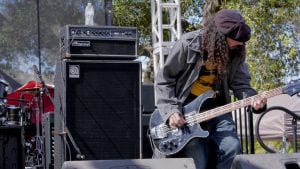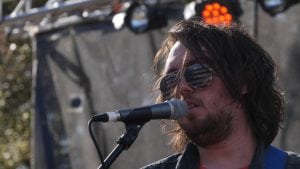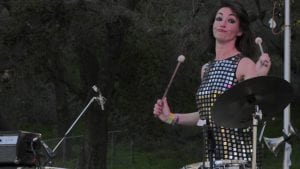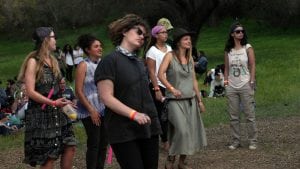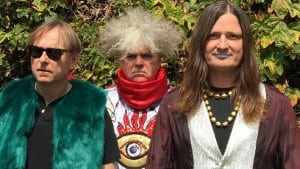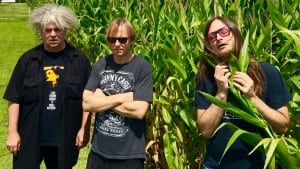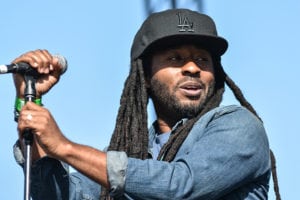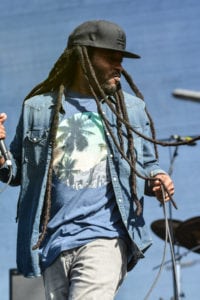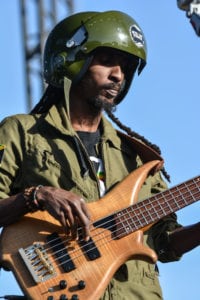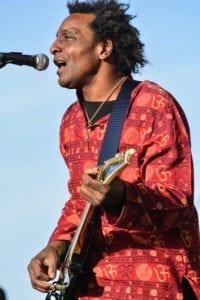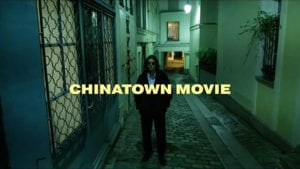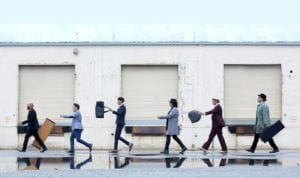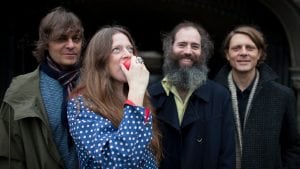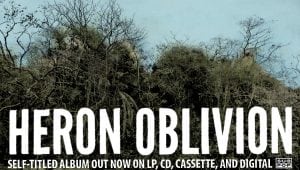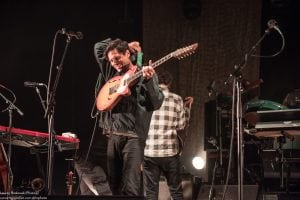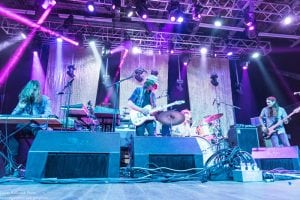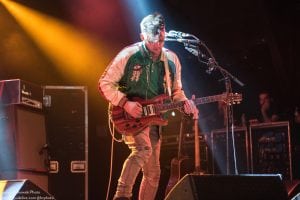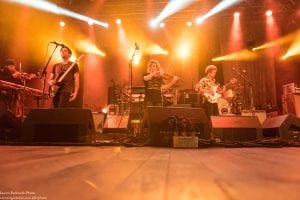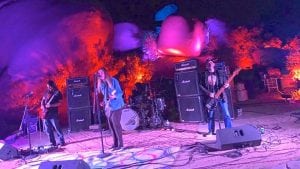Remember going to outdoor festivals, perhaps camping overnight, discovering the magic of music outdoors surrounded by nature? This review of Starry Nites Music and Arts Festival took place over a weekend in 2017.
Tucked away in the mountains of Santa Barbara, far from the hum of a freeway or a room made of drywall, the Starry Nites Music And Arts Festival sought to remove us from the toil and tussle of city life, and free us from the endless barrage of responsibilities and thoughts and stress that seem inescapably bound to leading a “normal” lifestyle. Out here, in the unity and peace of nature, all you had to worry about was breathing, and the band schedule. For all intents and purposes, the festival took place in its own plane of existence, a sort of Eden for music. And so it seems only fitting then that the music was just as transportive, featuring a lineup of artists who seemed hand chosen for mental escapism.
The first of these bands that I made it in time to see was DOWN DIRTY SHAKE, a psychedelic soul-rock jam band from San Francisco. Staying true to these genre descriptors, their performance was a feast for the mind. With two drummers, maracas, tambourines, and an extremely involved bassist, the enveloping pulse of their rhythm section set the backdrop for some truly explorative melodies and solos. Although they played to an audience of maybe a hundred people, it could not have mattered any less if they had played the Staples Center, or a basement. Eyes closed, bodies moving to the beat, they played as though for no other reason than to unleash the flow of music from within.
On the heels of this performance was the decidedly different, though no less immersive, ELVIS DEPRESSEDLY. Gone were the two drummers, or even just one drummer, with the band’s lo-fi, home-grown style being better served by a drum track. There is a quiet beauty to their brand of melancholic indie pop. Their setlist was a calming musical river, comprised of short songs with fluid melodies, carrying you gently down an ethereal stream of thoughts and impressions. I also distinctly remember the lower, bass frequencies being turned all the way up, so that my whole body would vibrate with each note. For this I have to commend the sound engineers, for it only further served to cradle my mind as I floated along.
Up next was the disco-rock duo by name of KOLARS. Now, being a two-person band can be tough to pull off. Without the presence of a third person moving around and making noise, the band usually has to compensate by being consummate, inventive musicians. I say all of this because that is precisely what they were. In lieu of a standard drumset, Rob Kolar and Lauren Brown thought it would be better to kick the bass drum on its face so that she could tap dance on it. Accompanied by a single floor tom, a snare, and a little crash cymbal, Brown bashed passionately, which was all she needed to make the rhythm of each song feel complete.
Alongside Kolar’s powerful, gritty voice and rugged, pulsing, rock-n-roll guitar playing, as well as backing tracks bursting with funktastic bass lines, the band commanded us to escape ourselves in dance. And with sequined, shiny clothing, and an even more glittery guitar, the band seemed truly committed to the expression of their music. By the end of their set, they were panting and sweating and smiling, and so was I.
While KOLARS may have been inspired by music of the past, THE STRAWBERRY ALARM CLOCK took it one step further by actually being music of the past. This seasoned group of rock veterans took the stage in honor of their 50th anniversary, making the band older than most of the performers on the lineup. But if you thought this meant the energy of their stage presence would be bogged down by age, think again. These old dudes still have it in them, taking us on a mind-expanding journey into the roots of psychedelic music. This was done with help of two drummers, electric sitars, two lead guitarists, bongos, a flute, a xylophone, and a masterful understanding of music. From a drum solo battle, to playing a guitar with drumsticks, to having two guitars embark on expertly nimble and mind blowing solos at the same damn time, these men were as involving and immersive as the drugs that influenced their music. Standing in a crowd of only a couple hundred people, I felt truly blessed to have been lucky enough to belong to such an exclusive, fortunate audience.
After THE KILLS absolutely slayed their headlining set, an acoustic after show was set to take place “down by the river,” at the edge of the festival grounds. Intrigued by the idea, and awake enough to go, I decided to head down for some lullaby rock.
Once I had passed all of the RV campers, security guards, and general festival noises, a winding path of light bulbs came into view. Hanging delicately on a wire beside a dirt road, they sprinkled the dark, forest landscape all the way down to a quiet, leaf covered, backyard patio. I took a seat amongst fellow music lovers and waited for the soothing sounds of an acoustic guitar. Following a day of fuzzed out, psychedelic craziness, I found myself most ready for a slower, gentler change of pace.
After only a short wait, Brent Deboer (The Dandy Warhols) and Bob Harrow of IMMIGRANT UNION took the stage. What followed was not just slow and gentle, but also beautiful, melodious, tender, and authentic; music sung straight from the heart. The vocal harmonies of these two men were pitch perfect and the guitar playing was effortlessly serene. Unfortunately, so soothing was the music that the notes soon began to fall upon my mind like warm, musical blankets. So that after only three songs or so, I had been sufficiently lullabied. As I stumbled back to my camp, the sounds of the acoustic show bouncing ever more faintly against my back, I smiled gratefully at the thought of doing it all again tomorrow.

